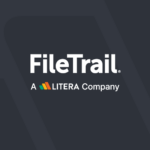Hey there, friend! We’ve all ridden the roller coaster of emotions that comes with rolling out new software, haven’t we? It’s akin to prepping for the big league – your heart races with excitement, but deep down you know just how crucial it is to nail your game plan.
You’re aiming for that seamless switch-over where efficiency soars and everyone’s exchanging those well-deserved high-fives. But let’s keep it real; reaching that sweet spot can sometimes feel more elusive than a perfect March Madness bracket.
We totally get the vibe because we’ve tackled our fair share of these digital debuts – squinting at screens while trying to piece together a strategy amidst what sometimes feels like an endless string of code.
Here’s the scoop: we took that head-scratcher head-on—given 70% of hefty change initiatives tend to miss their mark—and emerged with some smart plays straight out of the playbook.
In this article, you’ll find hands-on tips and wisdom from those who’ve been on the front lines—all meant to help you set realistic expectations, wrangle data without breaking a sweat, and coach your team into all-stars.
So are you ready to swap potential chaos for some clear-cut wins? Stick with us – victory is just around this digital bend!
Key Takeaways
- Set clear expectations with all departments before starting software implementation. This involves honest discussions about changes and patience as people learn the new system.
- Use thorough data analysis to ensure the software fits daily work needs, and apply industry – specific templates for smoother transitions.
- Provide formal training for both administrators and end users, using a “train the trainer” approach to create in-house experts who can then teach others.
- Partner with experienced professionals for installation to avoid common pitfalls and speed up return on investment.
- Regularly update your team when new features are released and invest continuously in your implementation methods to reduce project timelines.
Setting Expectations for Successful Software Implementation

Ah, setting expectations for a successful software implementation—it’s the cornerstone, where our journey to seamless integration truly begins. We understand it’s not merely about hitting ‘go’ on a new system; it’s crafting the vision and ensuring every stakeholder is on board, ready to navigate through this digital transformation together.
Managing Expectations
We know that managing expectations takes skill and strategy. It means having honest talks with all the departments involved. We sit down with records staff, IT folks, and leaders to talk about what’s changing.
This helps everyone understand how the new system will differ from the old one.
It’s important for users to get why some tasks might take longer at first with the new software implementation. Patience is key as people learn and adjust. Our team makes sure this message is clear so nobody gets frustrated when things don’t go super fast right away.
We keep talking, training, and supporting every step of the way.
Having Intentional Conversations With Relevant Departments
Let’s talk about having real talks with the teams that matter. These chats are key to getting everyone on board with our new software.
- Set up meetings with records staff, IT pros, and the bosses. Everyone’s voice matters, and these folks can spot any hiccups we haven’t thought of.
- Lay out what we’ve planned for the software. Make sure we cover how it’ll help each department do their work better.
- Listen to what they’re worried about. We might hear some fears about changing from the old system to this shiny new one.
- Show them how it’s all going to go down. We can walk through a day in the life with our new software so there are no big surprises later.
- Don’t forget training is crucial. When people know what to expect, they won’t get as frustrated if things are slow at first.
- Make a promise and keep it – we’ll support them every step of the way. Whether it’s a quick question or a big problem, we’re here to help.
- Keep checking in after we start using the software. It shows we care and helps us catch any issues before they blow up.
Education for Users
We know that hopping onto a new software system isn’t just a walk in the park. It’s crucial to educate our team on how this fresh tech will differ from the old tools they’re used to.
Sure, it might take longer at first to get those tasks done, but we’re here to guide everyone through each click and swipe until it feels like second nature.
Our training doesn’t stop at just showing how things work; we dive deep into the why’s as well. This way, every user gets the big picture – understanding not only what buttons to push but also why they’re pushing them.
Knowledge is power, after all! With us, employees become pros at using the new system efficiently and effectively, ready for whatever comes their way.
Keys to a Successful Software Implementation for Data Management

Navigating the seas of data management can be treacherous—yet it’s crucial for a sleek software voyage. We’ve honed our approach, ensuring that every snippet of data is meticulously charted and tailored to fit like a glove with industry-specific templates; think of it as your GPS to uncharted efficiency gains.
Conducting a Thorough Analysis of the Client’s Data
We know how vital it is to dive deep into the client’s data for a successful software implementation. This analysis makes sure that the data lines up perfectly with what the end users do every day.
- First, we look at all the different kinds of data our client has. This includes checking out sales records, customer info, and anything else tucked away in their system.
- We ask loads of questions to understand how each piece of data plays a role in the daily work. What’s used most? What sits collecting dust?
- Our team pinpoints any issues within the current data set—like duplicate entries or outdated information. Cleaning these up keeps everything running smooth.
- Next up, we map out who needs what data and when they need it. It’s like making sure everyone at the party gets their favorite slice of pizza.
- Using industry terms, we create templates that make sense to those using them. If it feels familiar, it’s easier to adopt.
- These templates speak our clients’ language. They mirror how departments already work which means less time scratching heads and more time getting stuff done.
- We blend this new setup into the existing workflow gently, so it feels like a natural step rather than an awkward shuffle.
- Once everything’s in place, we keep an eye out for how well the new system is being accepted by those digging into it daily.
Using Industry-Specific Deployment Templates
We’ve found that tapping into industry-specific deployment templates is a game-changer. It’s like handing users the keys to a car that’s already tuned for their journey. These templates reflect common workflows and speak the language of each profession, making software adoption smoother and quicker.
Imagine this: every department gets a tailored roadmap that feels familiar right from the start. They’re not just using any tool; they’re wielding one crafted for their unique needs.
By aligning everything with what teams do daily, we boost confidence and streamline their transition period—you could say it’s our way of helping them hit the ground running!
Best Practices for Software Implementation, Installation and Training

In our journey toward peak efficiency, we recognize the heart of success lies in not just having cutting-edge software but also ensuring it’s expertly installed and users are thoroughly trained.
It’s about diving into the digital deep end with confidence—because we’re here to provide a steadfast hand through comprehensive training regimes that empower you to navigate new systems like a pro.
Formal Training for Software Administrators and End Users
We understand the importance of formal training for a successful software launch. It’s essential to get both software administrators and end users up to speed.
- Choose the right trainers. We pick experts who know the software inside and out.
- Create comprehensive materials. Our resources include guides, videos, and FAQs.
- Set up live training sessions. These interactive workshops cover all the key features.
- Offer hands – on practice. Users learn by doing, which helps them remember how to use the software.
- Provide continuous support. After initial training, we’re here to answer questions and offer help.
- Use a “train the trainer” approach. This way, we create in – house experts who can then teach others.
- Tailor training to different roles. Every team member gets the knowledge they need for their specific job.
- Update training when needed. As we release new features, we ensure everyone knows how to use them.
Utilizing a “Train the Trainer” Model
Creating power users through a “train the trainer” approach is what we do. This method turns select individuals into experts on our software. They get in-depth knowledge and experience with every feature.
Then, these trained trainers teach their colleagues how to use the system effectively.
This training model makes sure everyone learns from the best and becomes confident using the new tools quickly. It’s like planting seeds of expertise throughout an organization – those seeds grow and spread skills across teams, boosting overall productivity.
Working With an Experienced Partner for Software Installation
We know that teaming up with a seasoned expert for software installation sets us up for success. These partners have seen it all – from minor bugs to major system overhauls. They bring a wealth of knowledge and can steer us clear of common pitfalls, making sure we’re on track from day one.
This hands-on guidance not only smoothes out the process but also ramps up our return on investment quickly.
Choosing the right partner is key—they’re part of our crew, after all. We look for pros who understand our business and mesh well with our team’s vibe. They help us nail those initial settings and configurations without a hitch, ensuring every feature works in tune with our company’s rhythm.
Plus, they offer insights that go beyond just getting things going—they set us up to keep evolving long after launch day.
Software Implementation Success Guaranteed With FileTrail

At FileTrail, we take pride in our relentless dedication to honing our implementation team and methodologies—yielding a track record of more clients smoothly transitioning with shorter project timelines; dive into the details to see why we stand out..
Continuous Investment in Implementation Team and Processes
We pour resources into our team and methods. Our implementation specialists get the best tools and training. This dedication means we’re always improving the way we work. We want to make sure your software rollouts are smooth and successful.
Our clients have seen more projects go live faster than ever before. Thanks to these efforts, project timelines have shrunk dramatically. Your business can trust us for a quicker path from start to success with new software solutions.
Increased Number of Projects Going Live and Decreased Project Length
Our team has seen a surge in projects reaching completion. With more hands-on-deck and refined processes, we’re launching faster than ever. This means our clients get to experience the benefits of their new software sooner.
They see improved business processes and return on investment without delay.
Shorter project lengths are now a reality, thanks to our streamlined implementation plan. We’ve cut down on unnecessary steps and maximized efficiency at every turn. Our cross-functional teams work tirelessly to ensure each phase from startup to user acceptance testing is optimized for speed without compromising quality or functionality.
Contact and Additional Information
Curious about how we streamline software implementation? Reach out to us directly, and dive deeper into our resources for all the nitty-gritty you need on making your next project a resounding success.
Contacting FileTrail for More Information About Their Implementation Process and In-House Team
We know you might have questions about how to roll out new software smoothly. Let’s chat about your needs and our methods. Our team at FileTrail is ready to dive into the details of our implementation process with you.
Reach out, and we’ll demonstrate how our in-house experts can guide you every step of the way.
Our website has resources galore—case studies, news, articles—all there for your deep dive into information governance solutions. Don’t hesitate to get in touch; that’s why we’re here! We’re eager to show you what sets FileTrail apart and help tailor a plan that fits just right for your organization.
Resources Available on the Company’s Website
Our website is a treasure trove for anyone looking to get the most out of our software. You’ll find detailed case studies showing how we’ve tackled real-world problems, upcoming events where you can meet us, and informative articles that keep you at the forefront of records management advancements.
These resources are designed to help you understand the impact of our solutions on your business.
For those hungry for more knowledge or with specific questions, dive into our news section—there’s always something new. Whether you’re after certification proof like ISO 27001 or need to glance over legal policies, it’s all there at your fingertips.
Plus, privacy policy details and copyright information ensure transparency and trust in everything we do. All these tools are just a click away—empowering you with information whenever needed.
About FileTrail

We’re pioneers in information governance, crafting solutions for the most regulated markets out there—discover how our expertise can drive your compliance and management to the next level.
Specialization in Information Governance for Highly Regulated Markets
We know the stakes are high in industries that face tough regulations. That’s why we’ve honed our skills in information governance, especially for markets where the rules are strict.
Think finance, healthcare, and legal firms – they all rely on us to manage their physical records and keep track of important documents. We make sure everything from retention schedules to matter mobility is handled with precision.
Our team stays ahead of changes in North America, the UK, and Europe so clients don’t have to sweat it. Document archiving? We’ve got it down to a science. This isn’t just about keeping things neat; it’s about giving firms peace of mind that they’re meeting every rule out there.
With us managing your records, you can focus on what you do best—running your business without the headache of compliance woes.
Recent Posts
Don’t miss our latest insights—check out the recent posts on our blog! We’re constantly updating with fresh content that delves into new software solutions, industry trends, and expert takes on records management challenges.
Regular Updates on Company News and Information Related to Records Management Software
We keep our fingers on the pulse, so you’re always in the know. Our website is chock-full of the latest scoop on records management software. This includes insider tips, system upgrades, and industry shifts that could affect your strategies.
We love sharing what’s happening around here—and how it impacts you.
Check out our social media for real-time updates and insights into records management trends. From Twitter feeds to LinkedIn posts, we connect with you where it counts. You’ll find us tweeting about new features or sharing thought leadership articles that help you stay ahead of the curve.
Plus, as an ISO 27001 Certified company, trust that we’re all about safeguarding your data while keeping you informed.
Transparency in Coverage Rule
In case you haven’t heard, there’s something big brewing on the federal front—the Transparency in Coverage Rule. It’s all about making healthcare pricing as clear as day, so hop over to our machine-readable files to see how we’re tackling transparency head-on.
Link To Machine-Readable Files in Response to Federal Rule
We’re on top of it! We provide a direct link to machine-readable files as demanded by the federal Transparency in Coverage Rule. Researchers and regulators can dive into this data, analyzing it with ease.
It’s all about clarity and openness – you get the full picture without any hassle.
Don’t worry about digging through pages for info; we make it simple. Just one click and you’re there, exploring our commitment to transparency. Trust us to keep you informed every step of the way – that’s how we roll at FileTrail.
Conclusion
Let’s get your software up and running the right way. Remember, setting clear expectations helps everyone stay on track. Make sure you analyze data deeply before diving in. Train your team well—they’re key to success.
Trust FileTrail for a smooth journey from start to finish!
FAQs
What are the key steps to take before implementing ERP software?
Before diving into the implementation of an ERP system like SAP or Zuora, a business must conduct a thorough needs assessment. This involves identifying critical paths and potential resistance to change among staff members. Engage in brainstorming sessions with key decision-makers for valuable insights.
How important is project management during software implementation?
Effective project management is crucial—it’s the backbone of successful implementations. Plan meticulously, track progress with version control systems, and ensure that cross-functional buy-in supports your strategy to avoid scope creep and enhance collaboration.
Can you explain what a 'minimum viable product' means in this context?
A minimum viable product (MVP) refers to launching with just enough features that enterprise resource planning systems need to function efficiently while allowing for feedback-driven improvements—think essential modules like accounts payable and inventory without all the bells and whistles initially.
Why does communication matter in software implementation projects?
Transparent communication strategies create touch points for customer engagement, supplier interaction, and internal updates—a lifeline throughout any complex process manufacturing or service delivery transformation facilitated by new technologies.
In what ways can we prevent issues when changing from our legacy system?
Change management is paramount when transitioning from a legacy system; it eases the process for employees who may show resistance to change. Provide training using tools such as Whatfix, establish clear service level agreements (SLAs), and don’t overlook unit testing!
Should I be concerned about data analysis after systems integrations?
Absolutely—after blending different applications like database functions or einvoicing through GoCardless within your ERP platform, careful data analysis helps assure everything works harmoniously… Plus? It ensures ROI calculations hit their targets post-implementation!





